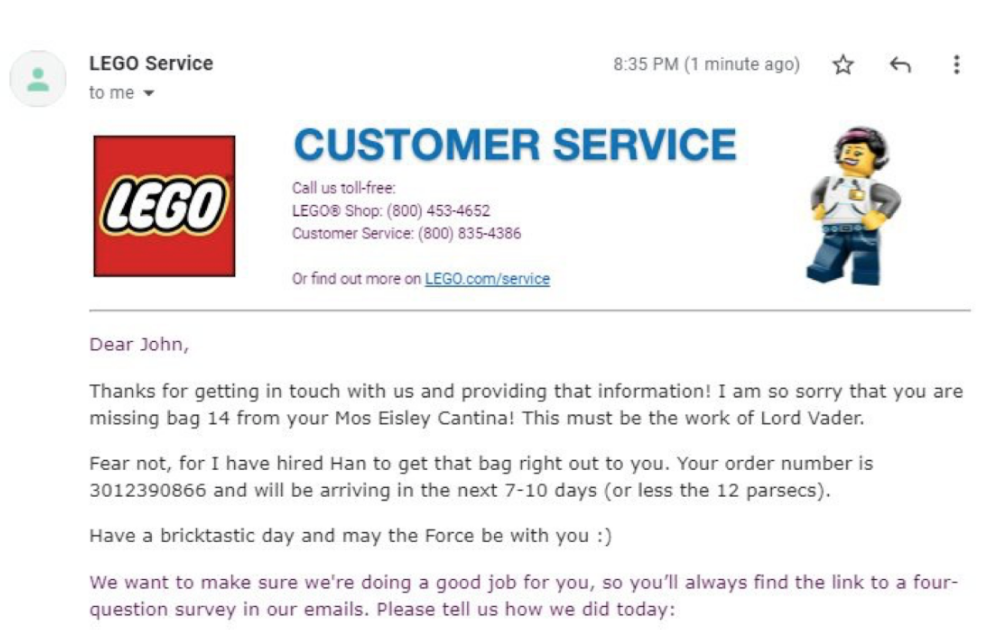Earning Consumer Loyalty with a Personalised Brand Experience

Even before the pandemic hit and flipped our world topsy-turvy, business owners – particularly retailers – would have felt the inevitable and gradual need to shift some of their offline sales channels into the digital sphere.
After all, consumer preferences are always in flux, and trends nowadays lean toward customers hoping for stores to proffer a digital counterpart, due to a myriad of reasons. The ability to purchase a product online, anytime, anywhere, is a pretty huge bonus, previously unforeseen in the physical retail space. Digital transformation was happening, slowly and steadily, with a small population of business owners reluctant to shift because that would mean great change.
Then everything changed when the coronavirus attacked.
With lockdowns enforced worldwide, the pandemic floored the accelerator on digital transformation. The physical world shut down, giving rise to the digital realm, and with it, a new set of consumer behaviour, preferences and habits that businesses now had to contend with.

The mantra “stay safe, stay home” came to be, and our new normal abruptly became empty streets and deserted shopping malls. Stressed out and worried over these unnerving circumstances, scores of tired humans hunched over their computers and mobile devices, clicking “add to cart” and “checkout now” in the hopes of alleviating their pandemic fatigue.
With the physical world shut down and closed off, it’s absolutely necessary to have a digital channel for businesses. Brands must cater to the ever-changing needs and wants of homebound consumers around the world, from behind the screen.
However, this isn’t to say that brick-and-mortar stores are now obsolete. Business management experts widely agree that the next step for businesses to take would be an omnichannel approach. It’s a multichannel approach that melds online shopping (be it through desktop or phone) with the offline shopping experience in a store. When taking both into consideration, the experience that consumers have with a brand must be a holistically seamless, fuss-free, and enjoyable one.
It’s All About the Experience
Nowadays, consumers have higher expectations for personalisation and service. According to the Asian Retail Outlook report, 79% of consumers say that customer experience is as important as a brand’s product and services.
Previously, brands competed on price and quality. However, our current market is saturated, and many brands nowadays offer similar products at extremely competitive prices. Hence, there is a shift in focus in the consumer mindset.
In the minds of the consumer, what sets a business apart is the brand experience they receive. This is heavily influenced by the company’s brand strategy. Essentially, the emotions that brands evoke in their customers, and the loyalty that they manage to evoke is what sets apart the best from the rest.

In the post-pandemic world, it’s difficult for digital channels – convenient and quick they may be – to have the same personal touch of human interaction that an in-store shopping experience offers. However, should brands be willing to make the extra effort, personalisation through online channels is always within reach, no matter how big or small the brand.
The Key to Unlocking a Superb Brand Experience: Personalisation
For retailers to build a sturdy bridge between the physical and digital shopping experience, they must pay the utmost attention to the efficiency and the experiential aspect of the interactions with their customers.
In terms of efficiency, business owners must aim to seamlessly connect the shopper with the products and services they want, both digitally and in-person. 81% of shoppers research products online before purchasing it in-store, which creates a gap between then that businesses should capitalise on.
Ever saw a product you really wanted that was listed as available in-store, only for you to take a trip down to the store and realise that it’s not in stock anymore? Or attended a class, only to realise that it’s been shifted to another room without prior notification? All these are examples of minor inconveniences for the consumer.
In terms of the experiential, brands should strive to create moments that inspire, excite, and take customers on a multi-sensory journey that builds brand affinity and amplification, both online. By creating small little touches to delight your customers, they will be compelled to return to you, time after time.
An example of personalisation would be Coca-Cola’s “Share a Coke” campaign, where people were given the chance to print their names on Coke bottles and cans for keepsake. This campaign paid off, allowing Coca-Cola to reconnect with their target audience in an extremely personal and close-up manner.
All these are examples of brands building an image of themselves in the minds of their consumers. Be it a positive or negative impression, it rests entirely on a business’s willingness to go the extra mile to make the brand experience a seamless and delightful one for their consumers.
Building Loyalty with LEGO
A post by Inc., revolving around LEGO’s superb experiential personalisation has been garnering much traction. John, a fan of LEGO and Star Wars, recently spent a hefty sum on an exclusive Mos Eisley Cantina Lego set from a retailer. With over 3,000 pieces and an instruction manual over 400 pages long, it’s clear that people who purchase the set are big fans of both LEGO and Star Wars.

Essentially, whilst building the set, he realised that it was missing a bag of pieces. After considering his options, he decided to reach out to LEGO via their website. Their response is amazing, and should be lauded as an example of how brands can personalise an experience with their customers to make it a delightful one, even if the experience started off as a negative one.

The staff who wrote this article knew clearly that she was talking to a Star Wars fan. By including small little touches such as including Lord Vader and Han in the narrative, she turned the initially disappointing experience into a delightful and enjoyable one.
Delight is easily the best way to remind customers why they became loyal customers in the first place. Her hard work has paid off, and this little action of hers has rebounded in this post going viral.
Personalisation is the New Black
More than 10,000 consumers were surveyed on what made their favourite brands stand out, and majority answered that it was the capacity to cater to their unique needs. Through meaningful and relevant communication, brands are able to create an authentic, enjoyable experience that shoppers crave.
As such, brands must meld their omnichannel experiences together, making the overall experience personal and seamless in the exact way that consumers hope for. The consumer journey of today is not a funnel, and is instead an infinite loop. Brands should strive to earn the loyalty of their consumers by nurturing relationships at every stage of the journey across different channels.
Would you like to start strategising how to personalise the experiences of your consumers for your brand? We would love to help. Due to the COVID-19 pandemic, Enterprise Singapore has increased the cost defrayed for each branding project from 70% to 80%.
For a complimentary, no-obligations, brand audit, contact us today.